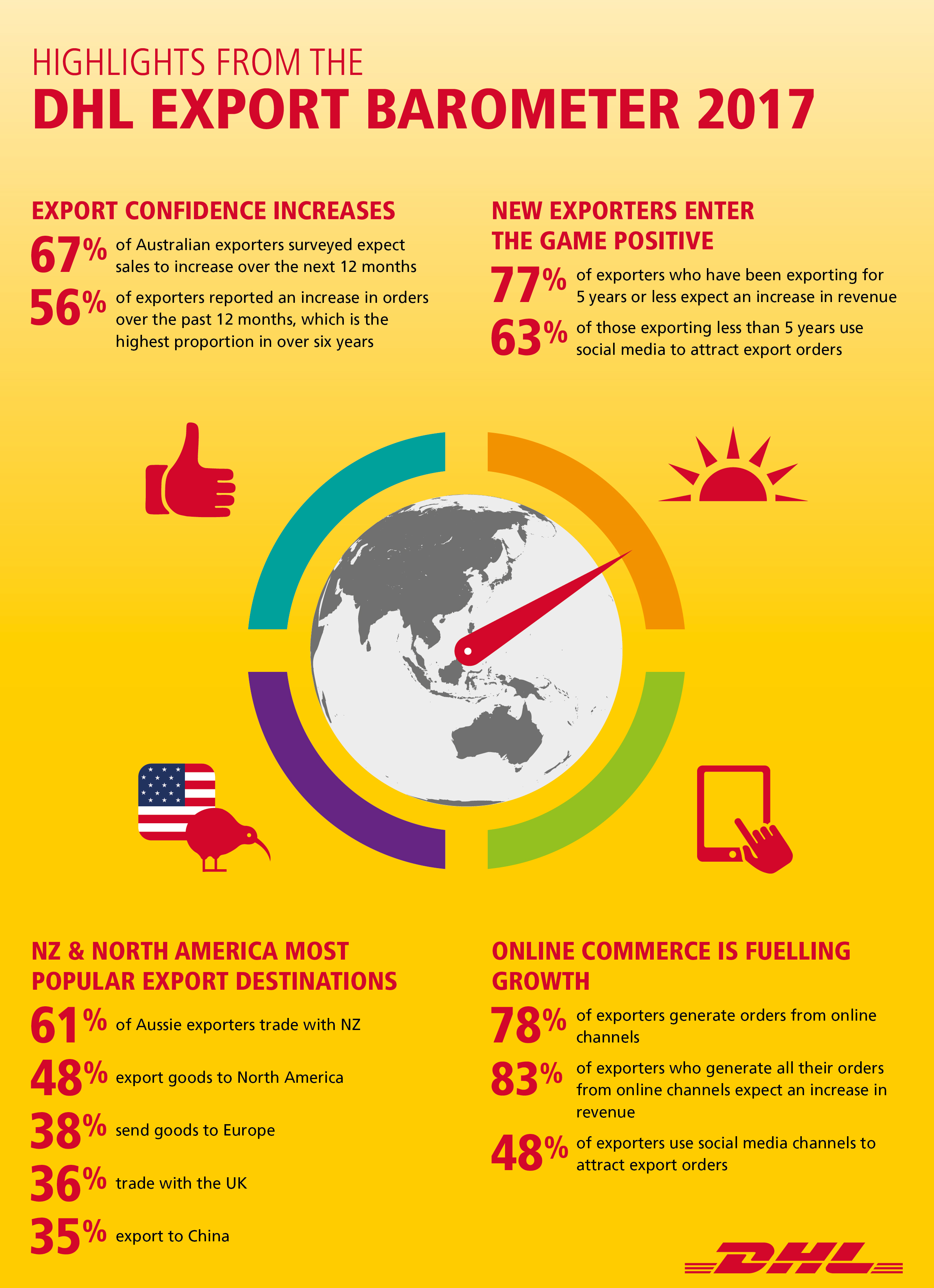Bullishness for the coming year notable in DHL Export Barometer 2017
The DHL Export Barometer 2017 shows export confidence is at its highest level since 2011, with overall positivity in international trade evident and with e-commerce to the fore.
The 14th annual research study into Australian exporter confidence found that 67 per cent of exporters surveyed expect sales to increase over the next 12 months – just 2 per cent below the peaks of positivity seen in 2007 and 2010.
Furthermore, exporters have reported a growth in actual orders, with 56 per cent of exporters recording an increase in orders over the past 12 months, which is the highest percentage in over six years.
Being active online appears to pay off, DHL researchers find, with 83 per cent of exporters who generate all their orders from online channels expecting an increase in revenue.
“Optimism among the majority of exporters is a great indication that the Australian e-commerce market is in a good shape,” DHL Express Oceania CEO Gary Edstein says.
“We are seeing innovative businesses gain significant traction on the global scale, encouraged by the ease of access to larger international markets via e-commerce and online channels.
“In particular, we’ve seen a rise in the number of newer exporters who have been exporting for less than five years.
“They now make up around one-third of Australian exporter landscape.”
The DHL Export Barometer 2017 confirms recent DHL commentary about online commerce and how it now permeates the export sector, especially among smaller businesses.
A hefty 78 per cent of Australian exporters generate orders from online channels – and 89 per cent of those who export consumer goods source orders online.
Furthermore, 85 per cent of small businesses – those with up to four employees – generate business online.
“The profile of businesses involved in exporting has changed massively in the past five years due to e-commerce,” Edstein says.
“We have seen significant growth in SME customers and businesses that send goods directly to consumers – as compared to via a retail presence or an international partnership previously.”
Proving the popularity of online marketing to bring in these sales, a quarter of exporters say they spend 60 per cent or more of their marketing budget on these online platforms.
For instance, exporters have also been investing on enhancing their websites with a focus on visualisation and usability, and improving fulfilment and customer service.
As noted in last year’s report, New Zealand is and remains the top export market for Australian exporters.
This is increasing, with 61 per cent sending goods across the Tasman, up five percentage points, and one in four naming it their largest export market.
The researchers put it down to international concerns.
“In an uncertain economic environment, Australian exporters are focusing their efforts on a handful of markets, with traditional English-speaking destinations emerging as top priorities,” they say.
North America comes second (48 per cent), though there are concerns about the risk of US trade policy disruption that may explain the slight fall from last year, with Europe (38 per cent) and the UK (36 per cent) following closely behind.
In North East Asia, China (35 per cent) and Hong Kong (27 per cent) takes the lead, ahead of the Japan and South Korea which have Free Trade Agreements (FTAs) with Australia.



